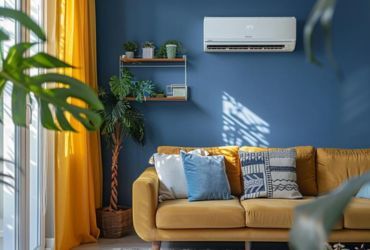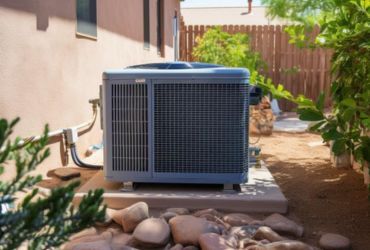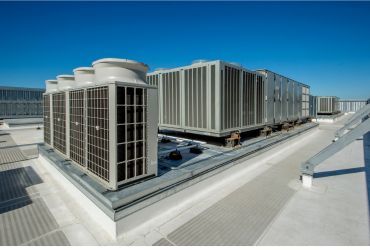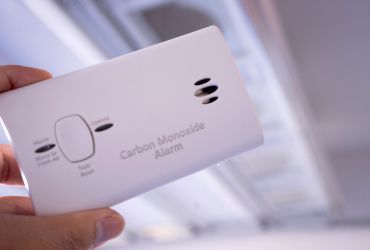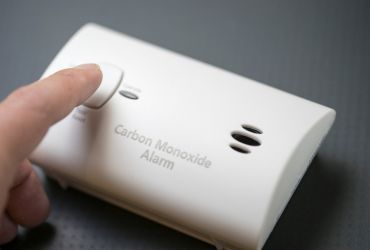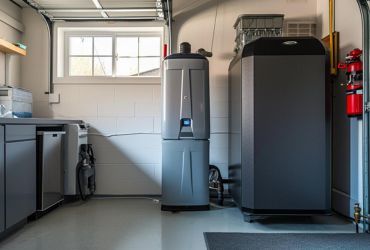Understanding Mini Split Error Codes and What They Mean
In today’s world, where comfort and efficiency are paramount, mini split systems have become a popular choice for heating and cooling. These systems are known for their versatility, energy efficiency, and ability to provide zone-specific temperature control.
However, like any other complex system, mini splits can sometimes encounter issues, and when they do, they communicate through error codes. Error codes are more than just a series of letters and numbers; they are your system’s way of telling you something is wrong.
By recognizing these codes and understanding what they mean, you can take the necessary steps to troubleshoot and fix minor issues yourself or know when it’s time to call in a professional. In this article, we’ll help you understand mini split error codes and what they mean, as well as how you can address them to keep your system running smoothly. Let’s jump straight in!
The Basics of Mini Split Systems
Before diving into error codes, it’s essential to understand the fundamentals of mini split systems. Mini split systems have two components, one on the inside and the other outdoors. These units are connected by refrigerant lines and work together to provide heating or cooling to specific zones within a building.
However, the advanced technology that makes these systems so efficient also means they rely heavily on electronic components and sensors to operate correctly. Understanding the basic operation of mini split systems and the role of each component sets the stage for grasping why and how error codes appear.
These codes are not random; they are precise signals pointing to specific system problems. By learning to interpret these codes, you can keep your mini split running smoothly and avoid unnecessary downtime or expensive repairs.
What Do The Common Mini Split Error Codes Indicate?
Now that we have a grasp of how mini split systems function, let’s explore the most common error codes you might encounter. These codes are designed to help diagnose issues quickly, whether it’s something you can fix yourself or a problem that requires professional attention.
E1 – High Pressure Error
The E1 code is among mini split systems’ most frequently seen error codes. It typically indicates that there is high pressure within the system, which dirty coils can cause blocked airflow or overcharged refrigerant.
Solution: Take a careful look at the coils in both units, removing any dirt you might come across. If everything seems fine but the error persists, it might be necessary to have a professional check the high-pressure switch and refrigerant levels.
E3 – Low Pressure
This could result from clogged filters, undercharged refrigerant, or refrigerant leaks. The effects of low pressure affect the effectiveness of the unit, leading to diminished performance and an eventual complete shutdown.
Solution: Inspect the air filters, which can affect the airflow when they are dirty or clogged. Also, see if anything is blocking the coils. If these steps don’t resolve the issue, a technician should check the refrigerant charge and inspect the system for potential leaks.
F1 – Indoor Ambient Sensor Malfunction
The F1 error code points to a malfunction in the indoor ambient sensor. When it fails, the system may not be able to regulate the temperature accurately, leading to discomfort and inefficiency.
Solution: First, check the sensor to ensure it’s not obstructed or dirty. Cleaning the sensor might resolve the issue. If the error persists, recalibrating or replacing the sensor might be necessary. Given the importance of this component, it’s often best to have a professional handle any sensor-related issues.
H1 – Defrost Mode Issue
The H1 code indicates that the mini split system is in defrost mode. This mode is crucial for maintaining the system’s efficiency, particularly in colder climates where ice can build up on the outdoor unit.
Solution: If the system gets stuck in this mode, it could be due to a malfunctioning control sensor or heat exchange. The technician will likely inspect the control sensor or heat exchanger and determine if they need repair or replacement.
H5 – Intelligent Power Module (IPM) Protection
The H5 error code signals that the system’s Intelligent Power Module (IPM) has detected an issue, typically related to voltage or temperature irregularities. This part of the unit helps project the compressor from damage.
Solution: This error often requires immediate professional intervention. A technician will need to assess the voltage supply and temperature conditions to ensure the compressor is not at risk of damage. This might involve stabilizing the electrical supply or addressing overheating issues.
Troubleshooting Mini Split Error Codes
Understanding what each error code means is only the first step. In this section, we’ll walk through some general troubleshooting steps you can take before deciding whether to call in a professional.
General Troubleshooting Steps
When you encounter an error code on your mini split system, it’s essential to start with some basic checks:
- Check the Power Supply: To check if the power supply is faulty, turn the entire unit off, unplug it for a few minutes, and then turn it back on. If the code persists, the issue is not the power supply.
- Inspect Wiring Connections: Loose or damaged wiring between the indoor and outdoor units can trigger various error codes. If you find any loose wires, reconnect them carefully. However, if the wiring appears damaged, it’s best to contact a professional.
- Clean Air Filters and Coils: Dirty air filters or coils are common culprits behind many error codes, such as E1 and E3. A regular cleaning schedule helps keep the system performing without interruptions.
- Check the Sensors: Sensors are crucial for the system’s operation, and their issues can lead to error codes like F1 or F2. Make sure the sensors are clean and properly aligned. If you suspect a sensor is faulty, it might need to be replaced, which could require professional help.
- Reset the System: Resetting the system is often a quick way to resolve any type of mini split error code. If it doesn’t, the issue is serious and will require expert intervention.
These steps are simple enough for most homeowners to handle and can often resolve minor issues without the need for professional assistance.
A+ Rated Heating & Cooling Service in Tucson!
If you want to have a mini split system that works flawlessly, you’ll need to invest time in understanding mini split error codes and what they mean. Being proactive can save you time and money and help you deal with the discomfort of a malfunctioning system, whether it’s high pressure due to dirty coils, low pressure from a refrigerant leak, or a sensor malfunction.
Regular preventative maintenance, including cleaning, inspecting components, and scheduling professional check-ups, is the best way to keep your mini split system running smoothly. Not only does this help in avoiding error codes, but it also enhances energy efficiency and extends the life of your system.
If you’re experiencing persistent issues or need expert assistance, don’t wait—reach out to us at Cummings Plumbing Heating & Cooling. We have an expert team of highly-trained professionals and a pedigree of satisfied clients ranging back more than 35 years.

